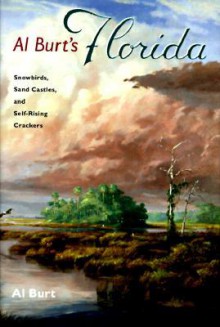"Florida starts in the subtropics and slowly rises into the true temperate zone, the geography and all living things taking on different looks as the elevation goes from sea level to hilly, from the central ridge to the beaches, the terrain from desert-like to swampy, the soil from sugar sands...
show more
"Florida starts in the subtropics and slowly rises into the true temperate zone, the geography and all living things taking on different looks as the elevation goes from sea level to hilly, from the central ridge to the beaches, the terrain from desert-like to swampy, the soil from sugar sands and rich muck to red clay. The blossoms change from orchids and frangipani to azaleas and dogwoods, the people from international sophistication to Cracker commonality, the accents from the bobtailed syllables of New York and distinctive fastbreaking Spanish of the Cubans to the mysteries of Haitian Creole and Southern mushmouth (like mine). . . . One winter season, the story goes, an amused snowbird encountered an old Cracker in crowded South Florida. ‘Lots of weird people down here,’ the snowbird said, patronizingly. ‘Yeah,’ the Cracker replied, looking him over carefully. ‘But they ain't near so many in August as they is this time of year.’"
As a roving reporter for the Miami Herald from 1973 to 1995, Al Burt traveled all of Florida, studying it with the insight of a native and the detached eye of the foreign correspondent he had been. During those years, he observed connections with the state’s past and speculated about its future, and, while he was at it, took note of the human frailties and heroisms he witnessed every day. Al Burt's Florida is like a family portrait, a loving but not uncritical view of a complex and fascinating state.
Burt's portrait combines vignettes of notable Floridians--some famous, like Ed Ball, but most better known locally--with those of the state’s many special places: Okeechobee in the teens and twenties, Miami Beach in the fifties (when dinner in Havana was only a $26 plane ride away), Wakulla Springs when it served as Johnny Weismuller’s Tarzan movie set, modern-day Tallahassee with its formality and grace.
Al Burt himself emerges from this landscape as the remarkable, engaging, and passionate Floridian he is. He takes us in hand, starting from his headquarters in the north Florida scrub, on a tour of the charm, substance, and fantasy that are Florida, yesterday and today. And always, he dwells with greatest affection on the smaller places, the real places, the anchors of old Florida--and on those folks who do their best to preserve them. In the process he captures what few have expressed--a sense of Florida as home.
show less

